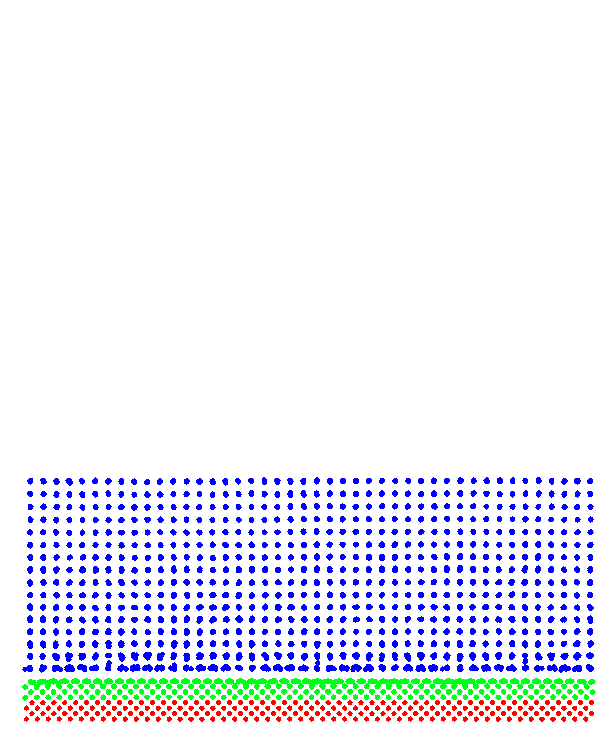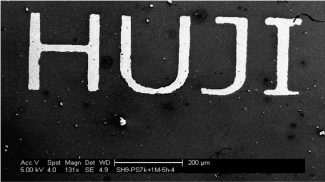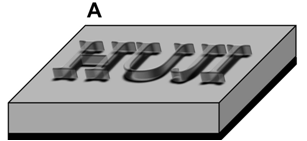

Laser patterning and lithography
Performing molecular dynamics (MD) simulations of ablation of Xenon atoms adsorbed on a Si/SiO2 surface revealed two distinct mechanisms of atoms removal from the surface.
1. At low laser power, intense and continuous evaporation of atoms from the the topmost layer results in removing the total population of adsorbed Xe adsorbed on the surface (A).2. At high laser power, ejection of the Xe atoms in form of a slab is performed via explosive desorption mechanism due to the temperature regime developing at the Xe- surface interface. The ablation process starts after about 6.5ns from the beginning of the simulation (B).3. Partial heating of the MD simulation cell leads to Xe thermally desorbing only from the heated part, thus crating a trough through the Xe multilayer, which is one of the steps in lift-off pulsed laser lithography (C).
AB
C
SEM image demonstrating the capabilities of our patterning method. One can see the word “HUJI” written in gold on a Si/SiO2 surface, using lift-off buffer layer assisted laser patterning (LO-BLALP). High resolution and accurate focus is observed.C. Second, uniform laser pulse, ablates the remaining buffer and metal on top, leaving behind the metallic image on top of the sample’s surface.B. Metal is then evaporated throughout.
A. A laser pulse, passed through a mask and lens hits a pre adsorbed buffer covered surface, a laser pulse imprinting the image from the mask to the buffer.







